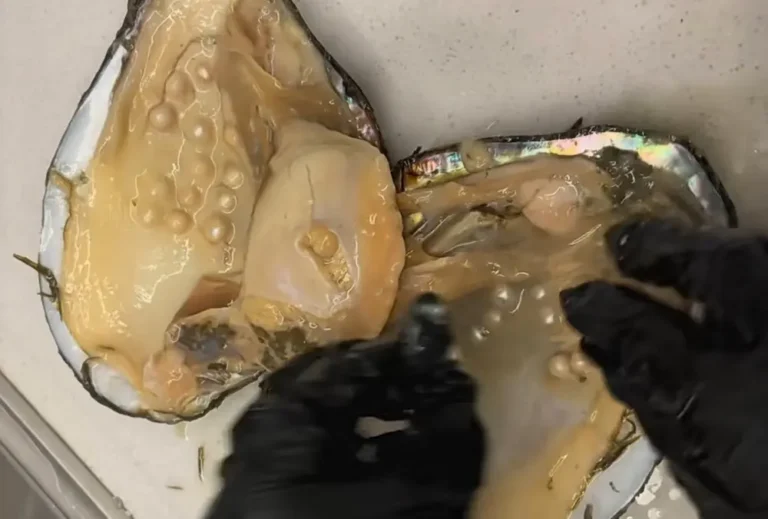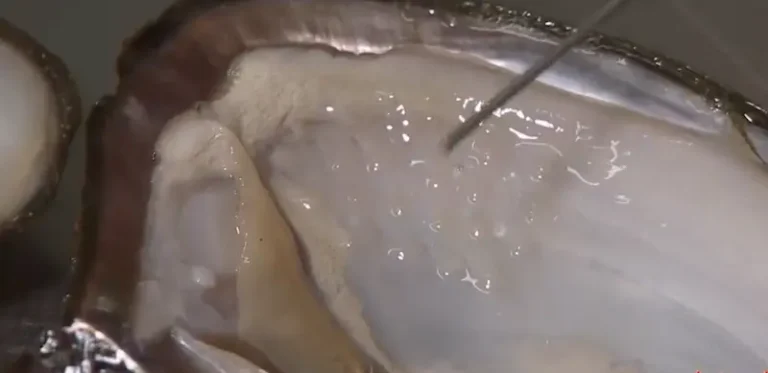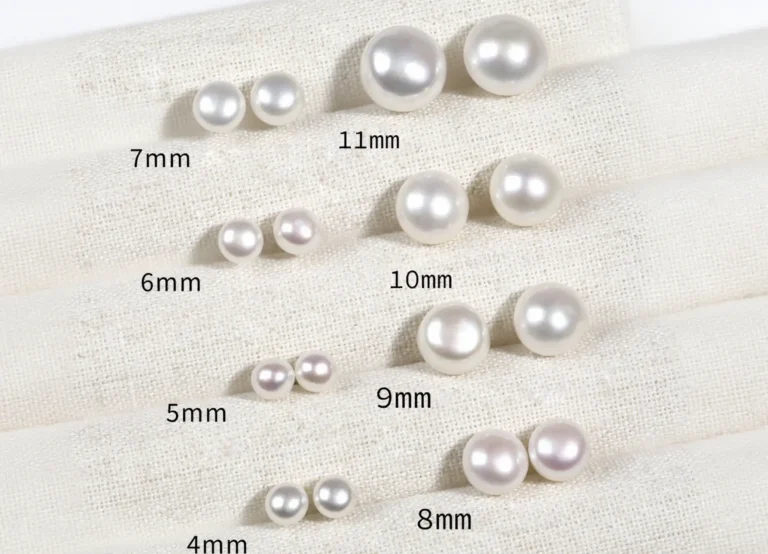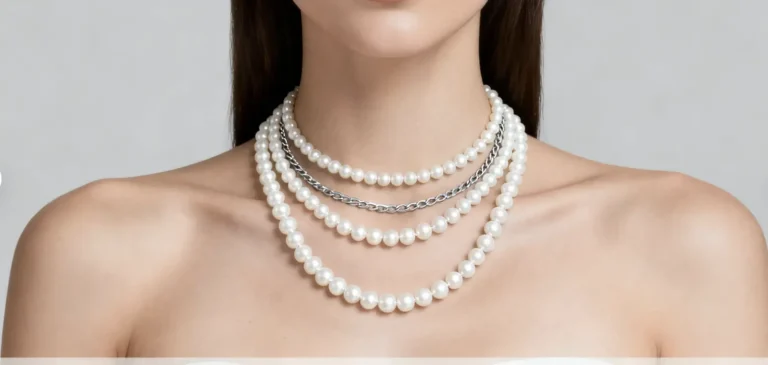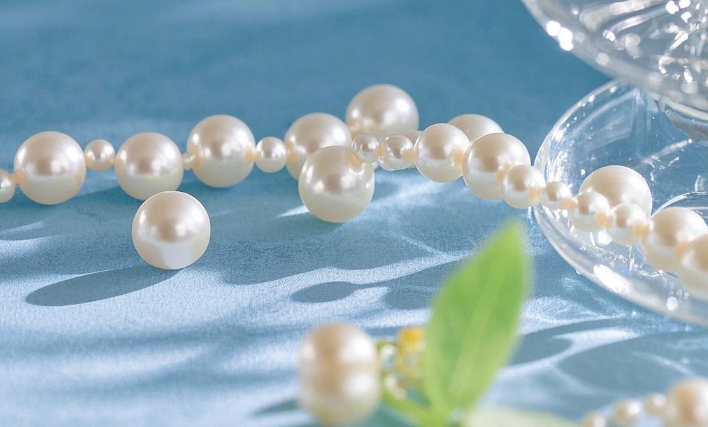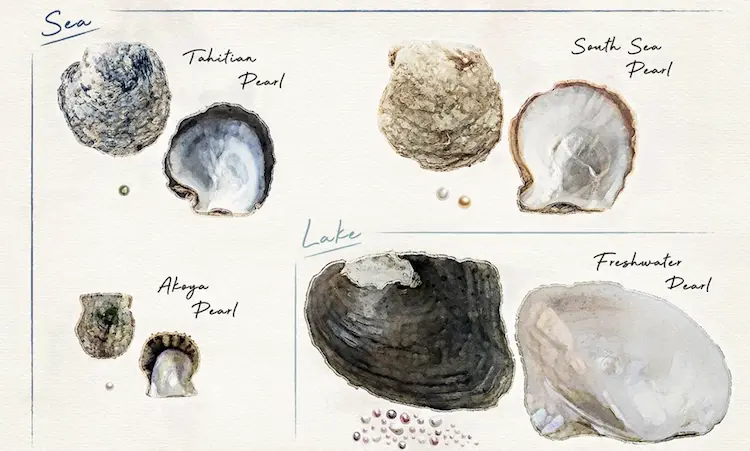Freshwater pearls are a great choice for a jewelry collection that will last a lifetime because they are both beautiful and useful. For hundreds of years, people have loved these shiny stones. They are a lot better quality and more beautiful than saltwater pearls for the same price. But how do you choose the right ones?
Choosing freshwater pearls means thinking about a few things: their size, shape, how smooth they are, and how shiny they are. This guide will help you become a confident pearl shopper, whether you’re buying your first set or adding to what you already have.
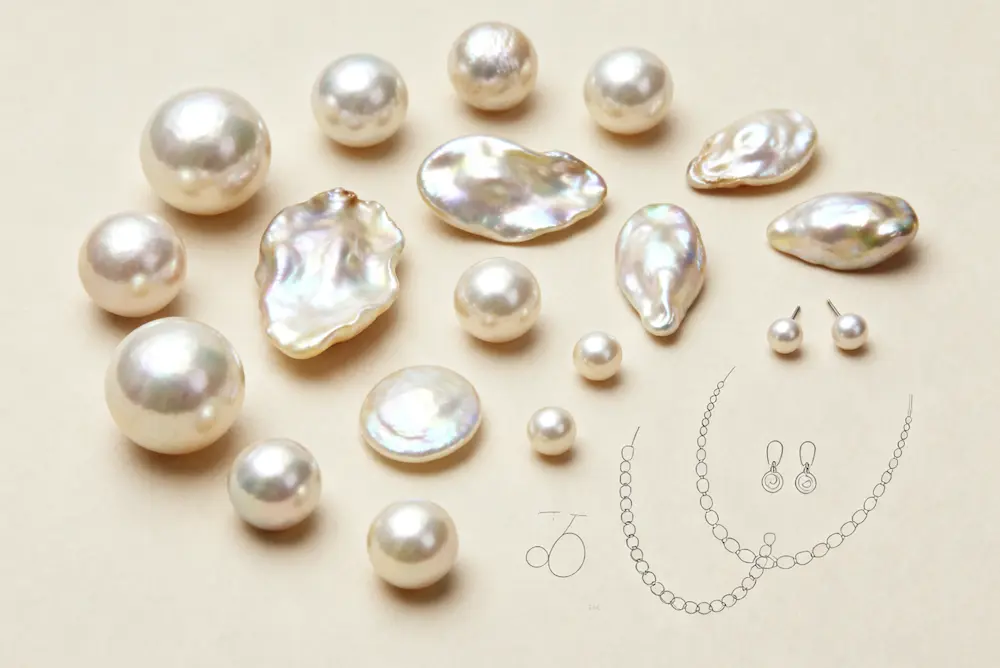
Understanding Freshwater Pearl Fundamentals
Freshwater pearls come from mussels that live in lakes, rivers, and ponds. Most of these pearls (over 95%) come from China, but Japan and the United States also produce them. These pearls start to form when something gets inside the mussel, which then starts coating it with a substance called nacre. This nacre is what gives pearls their shine.
What makes freshwater pearls special? They come in so many different shapes. While Akoya pearls are usually perfectly round, freshwater pearls are more irregular. This actually makes them more interesting to some people. Many collectors specifically look for “baroque” freshwater pearls because they have unique, natural shapes.
It usually takes 2-6 years for these pearls to grow. The longer they grow, the shinier they tend to be and the thicker the nacre gets. This longer growth time makes the pearls last longer and stay beautiful for years.
Pearl Formation Process Table
| Stage | Timeline | Development |
|---|---|---|
| Nucleation | 0-3 months | Initial irritant introduction |
| Early Growth | 3-12 months | First nacre layers form |
| Maturation | 1-3 years | Significant size increase |
| Harvest Readiness | 2-6 years | Optimal luster development |
Essential Quality Factors for Freshwater Pearls
Luster: The Heart of Pearl Beauty
Luster distinguishes exceptional freshwater pearls from mediocre ones. High-quality pearls exhibit a mirror-like surface that reflects light with remarkable clarity. When examining pearls, look for sharp, crisp reflections rather than dull, cloudy appearances.
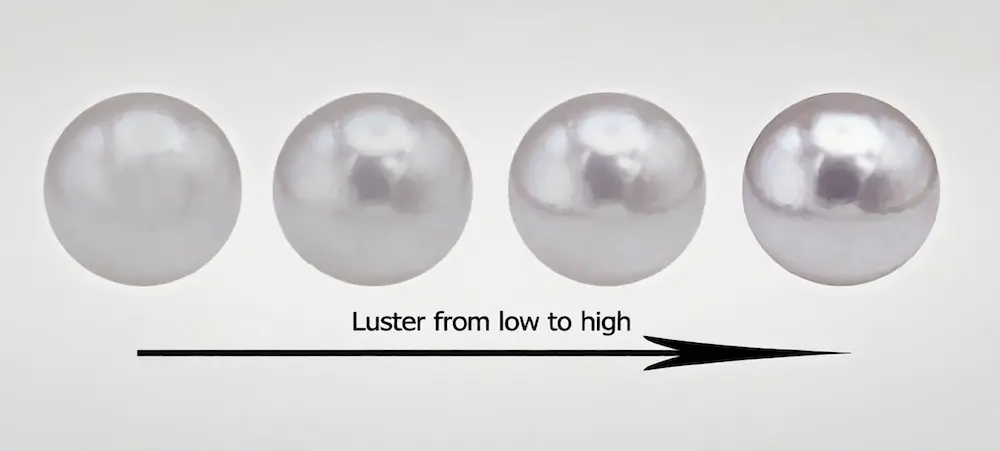
Professional graders evaluate luster on a scale from poor to excellent. The biggest, most important considerations when choosing fine freshwater pearls are consistency of shape and fine, bright luster. Poor luster appears chalky or dim, while excellent luster creates an almost metallic shine.
Keep in mind that lighting can trick your eye when it comes to how shiny a pearl looks. Warm lighting can hide imperfections in its shine, so it’s a good idea to check them out under different types of light. Natural daylight will give you the most accurate idea of how lustrous a pearl really is.
Surface Quality Assessment
Surface imperfections naturally occur during pearl formation. Cultured freshwater pearls are graded using a version of the Chinese Pearl Grading System which separates pearls into Class I, Class II, Class III and Class IV grades according to Surface Quality, Luster, Matching and perfection of Shape.
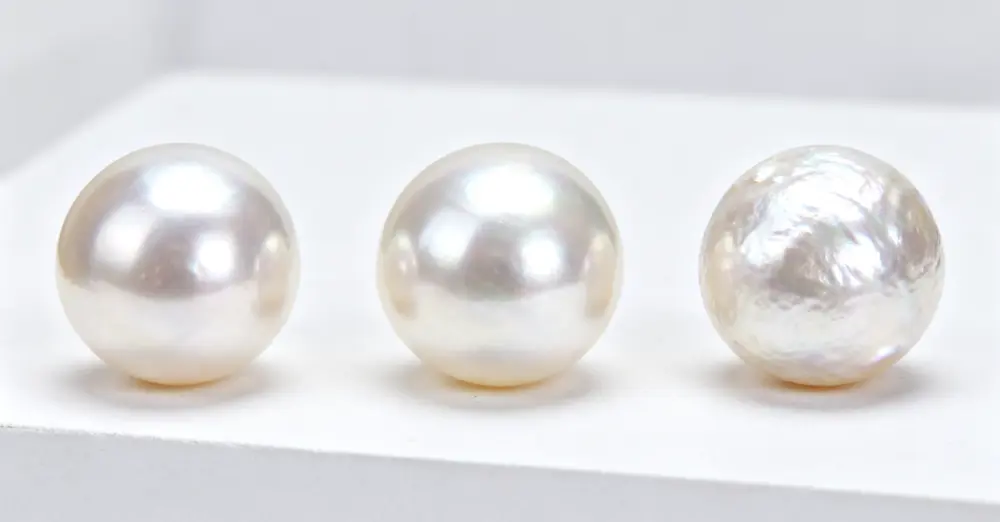
Clean surfaces command premium prices, but minor blemishes often disappear once pearls are set in jewelry. Focus on overall appearance rather than microscopic examination. Most high-quality freshwater pearls display 90-95% clean surfaces.
Shape Variations and Preferences
Round freshwater pearls traditionally command the highest prices. However, contemporary jewelry design increasingly celebrates alternative shapes. Near-round pearls offer excellent value while maintaining classic appeal. Oval, button, and drop shapes create stunning statement pieces.
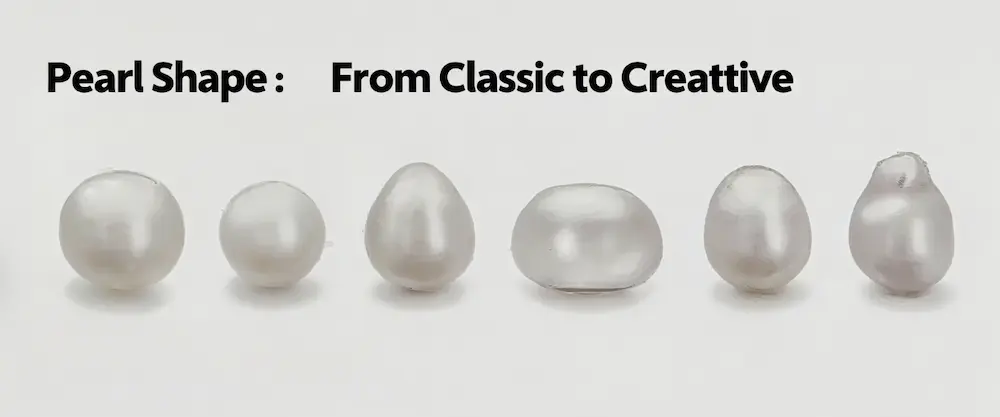
Baroque freshwater pearls are worth a closer look. Their unique, irregular shapes give them a character you just can’t find anywhere else. Many designers love baroque pearls because of their natural beauty and the artistic possibilities they offer.
Sizing Your Perfect Freshwater Pearls

Standard Size Ranges
Freshwater pearls are measured with each increment being about 1 millimeter (so, a 7.0-8.0mm pearl, for example). The most popular size for necklaces is usually between 7 and 8 millimeters. This size looks good without being too flashy.
If you’re looking for something more delicate or for a younger person, smaller pearls (5.0-6.5mm) are a great choice. On the other hand, bigger pearls (9.0-12.0mm) can really make a statement and are perfect for special events. When you’re picking a size, think about your own style and what you’ll be using the pearls for.
Size Impact on Jewelry Design
Different jewelry types benefit from specific size ranges:
- Earrings: 6.0-8.0mm provides comfortable weight while maintaining elegance. Larger sizes may prove too heavy for extended wear.
- Necklaces: 7.0-8.0mm offers classic proportions. Graduated strands create visual interest by varying sizes from 6.0mm to 9.0mm.
- Bracelets: Smaller pearls (6.0-7.0mm) provide better flexibility and comfort during movement.
Grading Systems and Quality Standards
Understanding Pearl Grades
The A to AAAAA grading system is used to evaluate the quality of cultured freshwater pearls. AAAAA is the best quality you can get, and the grades go down from there to A. This system helps everyone in the pearl business have a common way to talk about quality.
Keep in mind that not all pearl sellers use the same grading system. Some use the A to AAA scale, while others use numbers. A good rule of thumb is that when you’re comparing grades from different places, you can generally ignore any “A’s” after the third one, or any plus signs. So, basically, AAAAA is usually the same as AAA, and AA+ is usually the same as AA.
Focus on specific quality characteristics rather than relying solely on grades. Two pearls with identical grades may differ significantly in actual appearance.
Quality Indicators Checklist
When you look at freshwater pearls, here are some things to look for:
- Luster depth: Does the light look like it’s going into the surface before bouncing back? You want a glow that is deep and rich.
- Surface cleanliness: Are there only a few blemishes, and are they spread out nicely? You don’t want a pearl that looks too marked up.
- Shape consistency: If you’re buying a strand, do the pearls look similar in shape?They don’t have to be perfect, but they should be pretty close to the same.
- Color uniformity: Does the color of the whole strand look the same? It’s fine if there are small differences, but the tone should be mostly the same.
- Nacre thickness: Do the pearls feel strong and like they’ll last?Good nacre makes for a more durable pearl.
Color Options and Selection
Also, freshwater pearls come in a really cool range of colors. You’ll find them naturally in white, cream, pink, peach, lavender, and even golden shades. The color depends on the type of mollusk they came from and the environment they grew in.
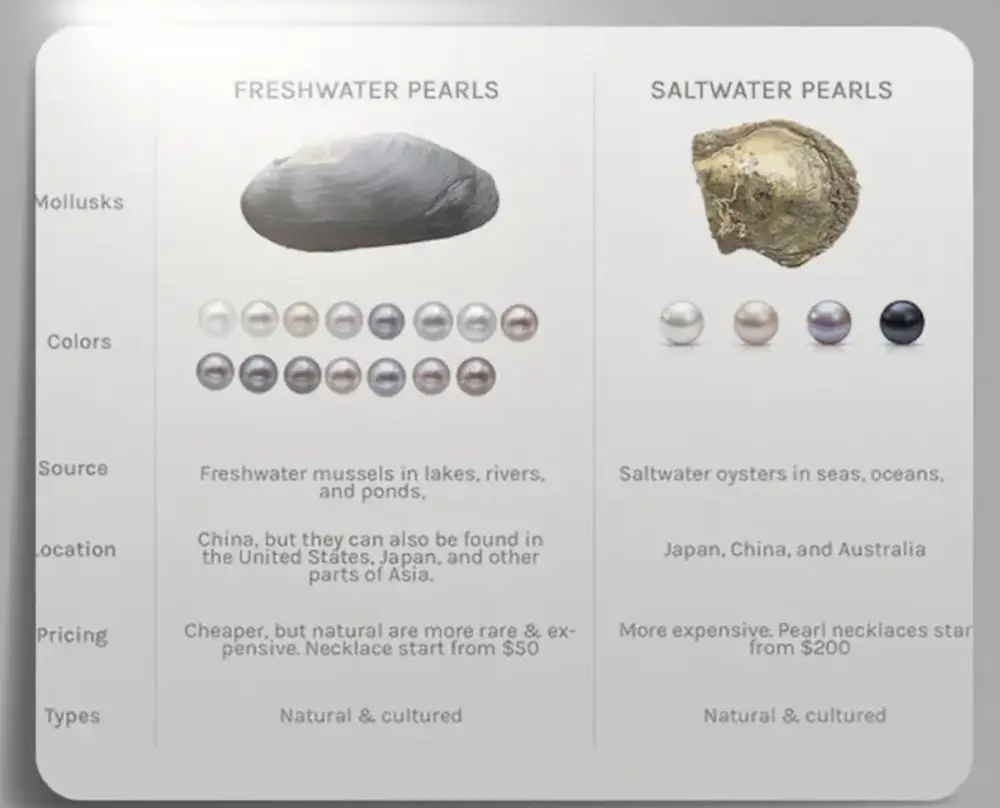
White and cream are always good choices because they go with everything and look good on anyone. Pink gives a warm, feminine touch. Peach is subtly classy, and lavender is a bit more unique and modern.
Dyed freshwater pearls expand color possibilities dramatically. Deep blues, vibrant greens, and rich blacks become available through careful dyeing processes. While beautiful, dyed pearls typically cost less than natural colors.
Building Your Freshwater Pearl Collection
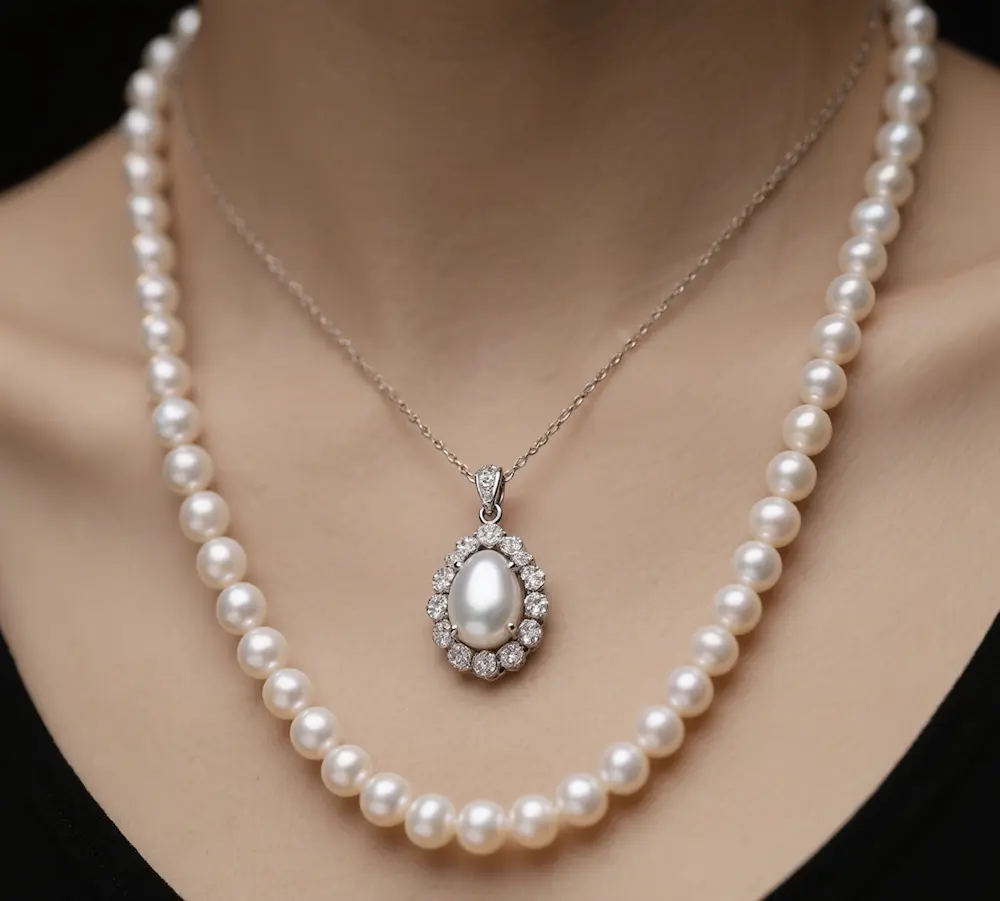
Essential Starter Pieces
Begin with fundamental pieces that provide maximum versatility. A classic freshwater pearl strand in 7.0-8.0mm serves as your collection cornerstone. This piece transitions seamlessly from business meetings to evening events.
Pearl stud earrings complement virtually every outfit. Choose the same size as your necklace for perfect coordination. Many jewelry enthusiasts consider pearl studs their most frequently worn pieces.
The traditional set is finished off with a pearl bracelet. Bracelets add a touch of class to any outfit, whether they are the same size as your necklace or a little smaller for comfort.
Expanding Beyond Basics
After you’ve picked out the basic pieces, think about adding some special ones. Baroque freshwater pearls are interesting and artistic, and they can start a conversation. Multicolored strands are fun and can be used in many different ways for casual events.
Long strands of opera length (28 to 36 inches) have a big effect when you double or knot them. These pieces turn plain clothes into stylish statements.
More and more, modern designers are using freshwater pearls in settings made of different metals. Rose gold looks great with pearls that have a pink tone, and white gold looks great with pearls that have a cooler tone.
Working with Reputable Pearl Sources
Finding Trustworthy Suppliers
Quality freshwater pearls require reputable sources. Established Pearl Manufacturer companies provide consistent quality and reliable grading. Research supplier backgrounds and customer reviews before making significant purchases.
You can often get better deals on pearls if you buy wholesale pearls from a pearl supplier instead of a regular store. But, before you buy a bunch of pearls, make sure you really understand their grading system and what their return policy is, just in case you’re not happy with them.
Look for suppliers who provide detailed photographs and honest descriptions. Reputable dealers willingly answer technical questions and provide educational resources.
Certification and Authentication
Real freshwater pearls should come with some kind of paperwork. It’s not legally required, but good pearl sellers will give you a grading certificate or a statement that proves they’re authentic.
Be careful of sellers who make crazy claims about where their pearls come from or how they’ve been treated. Real freshwater pearls don’t need fancy marketing terms to sell them. Their natural beauty is enough!
Investment Considerations and Value
Understanding Pearl Market Dynamics
The price of freshwater pearls can change a lot depending on how many there are, how many people want them, and how good they are. Since most of them come from China, what’s happening politically and economically in that region can also affect the price.
If you’re looking for pearls that will hold their value, go for the high-quality ones. AAAAA-grade strands (the best you can get) tend to stay valuable or even become more valuable as time goes on, particularly if the pearls are nice and big.
Think of pearls as a treat for yourself, not necessarily a way to make lots of money. They’re beautiful and good-quality ones can hold their value, but jewelry in general usually doesn’t give you the kind of big financial returns you might get from things like stocks or real estate.
Care and Maintenance for Longevity
To make sure your freshwater pearls stay valuable for as long as possible, take good care of them! Store them separately from other jewelry, especially anything with harder stones that could scratch them. A soft pouch or a jewelry box with a soft lining is the perfect place to keep them safe.
After you wear your pearls, gently wipe them down with a damp cloth. Avoid harsh chemicals or those ultrasonic and steam cleaners – they can damage the delicate outer layer of the pearl.
Get your pearls professionally restrung every few years. The silk thread they’re strung on can stretch over time, and if you don’t replace it, the strand might break! Restringing keeps them looking good and prevents you from losing any pearls.
Styling Tips for Different Occasions
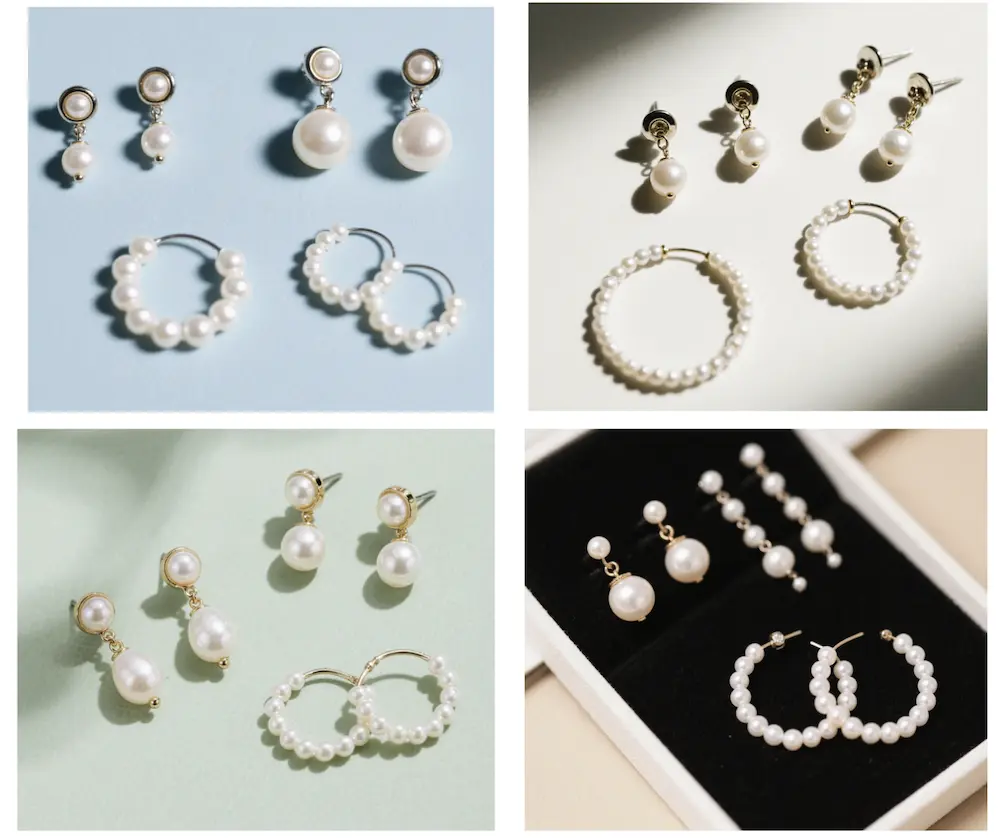
Professional Settings
When you’re in a professional environment, it’s best to keep your freshwater pearl choices classic and understated. A simple strand of white or cream pearls, around 7.0 to 8.0 mm in size, is elegant without being too showy.
For a polished, professional look, try wearing pearl stud earrings with a well-tailored blazer. Avoid pearls that are too large or have unusual shapes, as they might not be appropriate for more conservative workplaces.
Social Events and Celebrations
Evening events give you more dramatic pearl options. Longer strands, baroque shapes, or colored freshwater pearls make a big statement.
For a more sophisticated look, layer several strands of pearls of different lengths. For visual interest, mix different sizes of pearls in the same color family.
Contemporary Casual Wear
Pearls are showing up in really cool and unexpected ways in today’s fashion! A single, uniquely shaped baroque pearl pendant can look amazing with a casual outfit. For a new and modern look, try combining pearls with leather, denim, or modern metals.
Younger people who like jewelry often choose smaller freshwater pearls that are made in interesting ways. For a simple look, delicate chains with small pearls on them are great.
Special Considerations for Different Age Groups
Pearls for Younger Wearers
For teenagers and young adults, smaller freshwater pearls around 5.0-6.5mm in size feel less overwhelming and more fitting for their age.
Modern designs are key to making pearls appealing to younger people. Mixed-metal pieces or pearl-and-chain combinations create a contemporary vibe that trendy buyers love.
Mature Collectors
People who love pearls and know a lot about them often look for high quality and unique features. These are the kinds of pearls that really please a refined taste: big, oddly shaped baroque freshwater pearls or pearls with rare, natural colors.
Collectors who are really serious might even buy pieces or designs that are important to history or that are good enough to be in a museum. These pearls are passed down from one generation to the next as family heirlooms.
Seasonal Considerations and Trends
Some kinds of pearls are more popular in certain seasons. Colors of freshwater pearls that are lighter and brighter are what spring and summer are all about. Warm-weather clothes look great in pink and peach colors.
People like pearl colors that are richer in the fall and winter. Golden and creamy colors go well with the earthy colors of fall, and white pearls look classy with darker winter clothes.
The demand for pearls goes up a lot during wedding season. June is the month when brides are most interested in pearl jewelry, which can make it harder to find and more expensive.
Technology and Modern Pearl Cultivation
These days, pearl farms are always improving how they grow freshwater pearls! New methods for starting the pearl-making process result in pearls that are rounder and have a much more beautiful luster.
Modern pearl farms also carefully control the environment where the pearls grow. Things like temperature, water quality, and protection from predators all help the pearls develop in the best way possible.
More and more, sustainable farming is influencing how pearls are produced. Customers who care about the environment are looking for suppliers who are committed to being eco-friendly and treating their workers fairly.
Conclusion: Making Your Perfect Choice
Selecting the ideal freshwater pearls for your collection requires balancing personal preferences with practical considerations. Quality factors like luster, surface condition, and shape significantly impact both beauty and value.
Keep in mind that the “perfect” pearl is different for everyone. Your personal style, how you live your life, and how much you want to spend all play a part in choosing the right one. Trust the sellers with a good reputation, learn about how pearls are graded, and most importantly, pick pearls that you love!
Whether you’re starting with a simple necklace or building a large collection, freshwater pearls are always stylish and can be worn in so many different ways. Because they’re naturally beautiful and affordable, they’re perfect for anyone who loves jewelry, no matter how experienced they are.
Try to see pearls in person if you can. Pictures can’t always show the subtle details of their shine and surface quality that make the best ones stand out. Your perfect freshwater pearls are waiting to be found, and now you have the knowledge to find them!
Whether starting with a simple strand or building an extensive collection, freshwater pearls offer timeless elegance and remarkable versatility. Their natural beauty, combined with accessible pricing, makes them ideal for jewelry enthusiasts at every level.
Take time to examine pearls in person when possible. Photography cannot fully capture the subtle nuances of luster and surface quality that distinguish exceptional specimens. Your perfect freshwater pearls await discovery – armed with this knowledge, you’re ready to find them.

